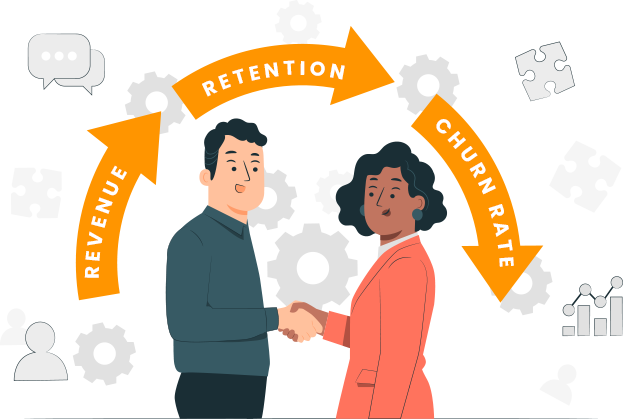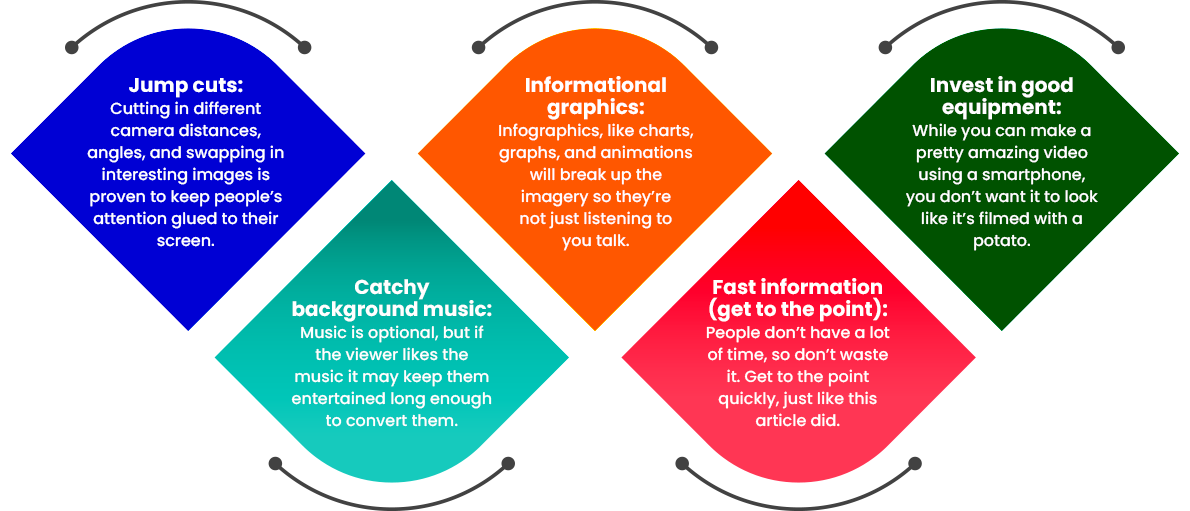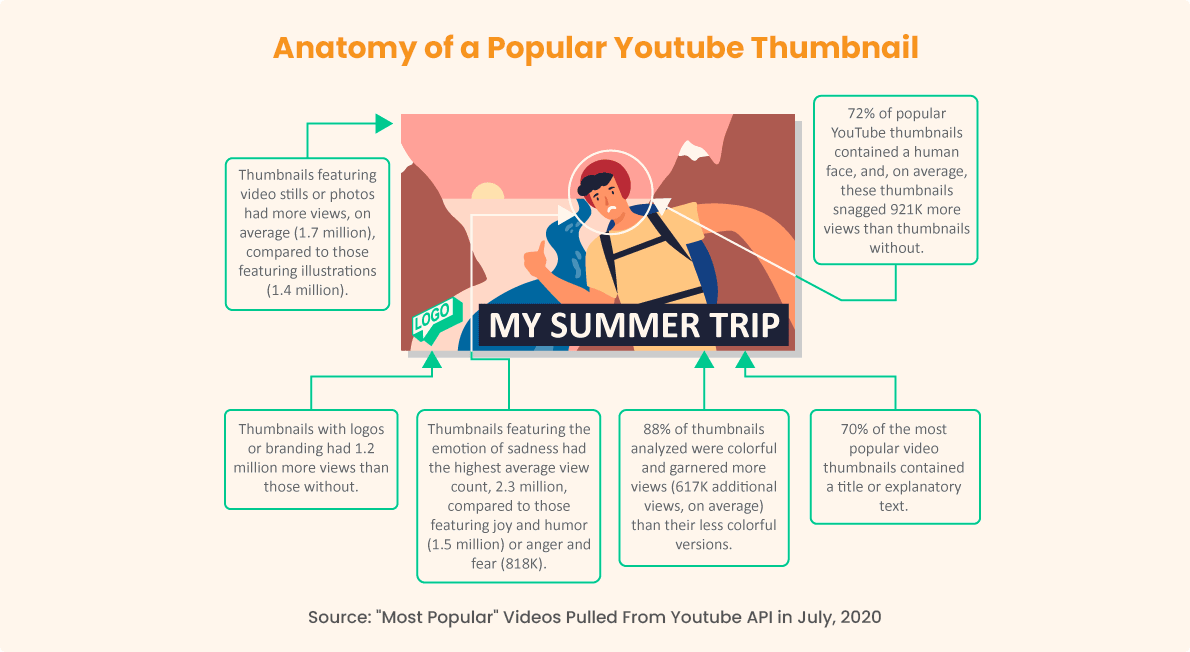

Customer Lifetime Value Examples: Understanding CLV
Customer Lifetime Value (CLV) gauges the revenue a customer will generate for your company over the entire duration of your business relationship.

Knowing this data is key to understanding where you should spend your marketing budget. That way, you won’t waste time and money marketing to customers who don’t purchase your products, or engage with your brand on other levels.
Customer Lifetime Value considers not only the initial purchase but any subsequent purchases, conversions, referrals, or other types of marketing the customer might generate. It also includes loyalty and satisfaction.
So by tracking CLV, you can make more informed business decisions and focus your energy on your highest-value clients with the highest ROI (return on investment).
Phew. I hope that makes sense!
Now I’m going to give you some Customer Lifetime Value examples (and teach you how to calculate them). That way you can improve your CLV and make more money.
Why is Customer Lifetime Value important for small businesses?
There’s a simple reason why CLV is super important for your small business:
Because it costs far more to attract a new customer than it does to retain one.
Even if you’re using a content-based strategy to bring in new leads through SEO, or social media campaigns, time is also money.
A well-crafted blog post, or Youtube video can take days or even weeks of your time. If you’re running ads on social media and acquiring clients from these avenues, marketing expenses can quickly add up.
The next thing you know you’re sleeping on your best friend’s couch.
Just kidding.
-
CLV lets you measure the financial impact of your marketing campaigns, and other activities so you can aim toward bigger financial targets
-
CLV can bring your focus to underutilized marketing channels so you can create more value and increase customer loyalty
-
CLV can help you adjust your short and long-term marketing goals based on your client data
-
It helps you spend less time marketing to unresponsive customers
-
CLV helps you provide a better customer experience to your most loyal customers
-
It helps you improve the quality of your products and services
-
Most of all, CLV helps you Improve relationships with existing customers and thus increases your business's overall profitability
To sum it up, understanding your Customer Lifetime Value is key to ensuring you’re providing your loyal customers with higher value. It will help increase profitability for all of your business, no matter how large or small it may be.
More resources here: Customer Lifetime Value case studies | more about Customer Lifetime Value
How to measure Customer Lifetime Value
While CLV can be estimated using various methods, the most important inputs are typically revenue, retention, and churn rate.
While there are various methods for estimating CLV, these three factors are typically the most important.
Revenue: The total amount of money that a customer spends throughout their relationship with a company.
Retention: The percentage of customers who remain loyal to a company over time.
Churn rate: The percentage of customers who cancel or do not renew their subscription with your company.
(you can see exactly how to calculate churn rate in this great guide)
Together, these three inputs can give a good approximation of CLV.
The formula looks like this:
CLV = Customer revenue - (subtracting) Cost of acquiring and retaining the customer.

Here’s a Customer Lifetime Value example:
Imagine your grandmother loves a certain type of specialty chocolate and you buy it for her birthday, from the same shop, every single year.
You’ve purchased that chocolate for the last ten years, at $27 a box.
CLV = $27 * 10 = $270
Your lifetime value is $270. This is assuming the shop didn’t spend any money on advertising to attract you.
If the shop had first attracted you with a direct mail flyer that cost them fifty cents, then you would subtract that from the CLV, making the CLV $265.50.
Understanding your customer’s lifetime value allows you to predict the CLV of other future customers.
Customer Lifetime Value calculation concepts
CAC:
Customer Acquisition Cost.
Customer acquisition cost, or CAC, is the cost of acquiring a single client.
This could include advertising costs, salaries for sales staff, or the cost of producing marketing materials.
If your CAC is high, it means you should rethink your marketing strategy. On the other hand, if your CAC is low, it could mean you're doing a great job of attracting customers.
Example: If the chocolate company invested $1000 a month in flyers, and attracted 400 new customers, the CAC is $1000/400 = $2.50
Gross Margin:
The amount of money a company retains after the costs of producing and selling its product.
If your gross margin is low, then you're not making enough profit per sale, and you'll need to either raise prices or find ways to reduce costs.
On the other hand, if your gross margin is too high, it could mean you're overcharging customers and may lose business to competitors.
Example: If it costs $1 to produce a chocolate, and the customer pays $1.10, then the gross margin is 10%
Average Lifetime:
The average amount of time a customer typically remains a customer.
Customer Lifetime Value calculation example:
Imagine Grandma loves chocolate so much that she starts her own chocolate shop. She decides to sell online through her eCommerce store.
After a few months, she wants to figure out her CLV.
It goes like this:
- New customers per month = 650 (N)
- A customer buys 2.5 boxes of chocolates on average (I)
- Average purchases per month = N*I = 1625 = (T)
- Her gross margin is about 15% (M)
- A customer spends on average $20 (S)
- Churn rate = 20%
- Average Lifetime (L) is 1/0.2 = 5 months (Note: 0.2 is the Churn rate)
CLV calculations 2
We’re not done yet.
- Overall profit from L months = T x S x M x L = $24375
- Profit per customer = 24375 / 650 = $37.50
- CLV = amount of money you make per customer - customer acquisition cost
- So CLV will be $37.50 - CAC
So if Grandma spends less than $37.50 per customer, she’s making money!
By the way, all of these calculations were borrowed from this Youtube channel. Credit to them.
How to increase Customer Lifetime Value
There's no surer way to business success than ensuring your customers keep coming back for more. But how do you do that? While there's no one-size-fits-all approach to increasing CLV, there are a few tried and true methods that can help.

1. Understand your customers
If you want to know your target market, take a long hard look at your existing customer base. Even if they’re a diverse group, they will have at least a few things in common.
Once you know the commonalities you can begin to target potential customers in a more refined way.
By studying your analytics, or running polls to your list, you can start to get a broader picture of who enjoys your product.
You can separate and alayze your existing base by:
- Age
- Sex
- Family size
- Household income
- Occupation
- Level of education
- Race
- Nationality
- Political leaning
- Religion
And once you have a solid understanding of your customer base’s demographics, you can then move on to segmenting them.

2. Segment your customers
To increase Customer Lifetime Value, you might segment by customers who are high spenders, or by those who are located in a certain area.
By understanding the different needs of your different customers, you can provide them with a more personalized experience that is tailored to them.
You can go deeper with segmentation, and create specific marketing campaigns targeted say, only at the Swedish women over 35 who enjoy yoga.
As a result, you're likely to see an increase in customer satisfaction and loyalty, which will ultimately raise your Customer Lifetime Value.

3. Create targeted marketing campaigns
If you have Netflix, you’ll notice they are great at marketing the types of movies and tv series to you. This is based on your previous viewing behavior.
Netflix’s average customer subscribes for 25 months. The CLV of a Netflix customer is $291.25.
When you use Netflix, they learn about you. They know what genres you enjoy, how long you usually watch for, and they use all of this data to market to you.
You should use your customer to market directly to your most loyal and valuable, or at least predictable, customers. Find out their likes, dislikes, and behaviors, then give them exactly the service they desire.

4. Use retention and upsell tactics
The art of selling isn't just about making a one-time transaction. It's about building relationships and finding ways to add value for your customers over the long term.
One way to do this is by using retention and upsell tactics.
For example, let's say you sell software that helps businesses manage their inventory. Once a business has signed up for your software, you can offer them additional features or upgrades that will help them save time and money.
Upselling can be a great way to increase revenues without having to find new customers. And it's not just about selling more stuff - it's also about providing more value for your existing customers.
This tactic can greatly increase your Customer Lifetime Value.

5. Analyze customer behavior
Customer behavior analysis is the study of customer behavior to improve customer service and loyalty.
It involves understanding why customers behave in certain ways, what their needs and wants are, and how they make decisions.
For example:
-
How long do they spend on your landing pages, and videos?
-
How often are they opening your marketing emails?
-
Which products do they prefer?
-
How likely are they to click on the links you send them?
By understanding customer behavior, businesses can develop marketing strategies that are more effective at attracting and retaining customers.
Additionally, you can identify potential problems that may cause customers to leave, and fix them. You wouldn’t want a broken link, or a poorly written piece of copy to cost you thousands of dollars, lowering your customers’ lifetime value.
Ultimately, analyzing customer behavior will help your business improve its bottom line by creating happier, more loyal customers.

6. Reward loyalty
There are a variety of ways to structure a loyalty program, but the basic idea is to give customers rewards for their continued business.
For example, you could offer a discount after a customer has made a certain number of purchases, or you could give away free products after a customer has referred a certain number of new customers.
Loyalty programs can be an effective way to increase Customer Lifetime Value, so it's worth considering if you're looking for ways to grow your small business.
The Wikipedia article on relationship marketing provides a solid overview of the important basic principles to understand in this field.
Conclusion
Improving your Customer Lifetime Value is important if you want to ensure the long-term success of your business.
There are many things you can do to improve Customer Lifetime Value, including:
- Segmenting and understanding your customers
- Creating loyalty programs
- Analyzing customer behavior
- Using retention and upsell tactics
- And rewarding loyalty
All of these strategies will help you keep your existing customers happy and coming back for more, while also attracting new customers.
Have you implemented any of these strategies in your business? If so, what has been the result?
Leave a comment below and let us know.


10 Surefire Ways to Bolster Your YouTube Conversion Rates
If you’re asking yourself how to increase conversion rates on YouTube, I'll do everything in my power to answer this question and provide helpful tips to increase your YouTube conversion rates.
YouTube is the perfect place to showcase your products and services. It’s the second largest search engine in the world, so knowing how to increase your conversion rates there is worth its weight in gold.
So if you're looking to drive traffic and conversions, YouTube should be your go-to platform.
Knowing this, YouTube conversion rates can vary depending on many factors, including the:
- Channel topic…
- Quality of the content…
- The call to action…
- The thumbnails…
- and much more
If you’re running ads, the conversion rates will be different than if you’re just looking for more subscribers, or increased traffic towards your information or eCommerce products.
This article will be focused on general conversion rates, rather than ads. If you’re looking for a guide to improving your ad conversions, go here.
Now keep reading, and I’ll do my best to explain how you can increase your YouTube conversion rates today.
What is the average YouTube conversion rate?
On average, conversion rates on YouTube range from 1-2%.
So for every 100 views, only 1-2 people will take the desired action, whether that be subscribing, clicking on a link to your landing page, buying a product, or even just watching the next video.
Anything from 5% - 10% is considered very good, and 10% - 15% is incredible. Above that and you’re a YouTube conversion rate rockstar.
Of course, YouTube conversion rates can vary depending on the specific goal as well.
For example, if you're asking viewers to subscribe to your channel, your conversion rate will be higher than if you're asking them to go to your website and buy a product.
This is especially true considering the YouTube algorithm does not like its users leaving them for other platforms. YouTube wants you to be using YouTube for as long as possible, not journeying off to strange websites.
Nonetheless, YouTube is an incredible platform for driving conversions, and with some strategic planning, your channel can see significant conversion results.
Now let’s get into how to increase conversion rates on YouTube.
1. Create higher-quality content
When it comes to YouTube marketing, one of the most important things you can do is create quality content.
After all, no matter how great your marketing strategy is, it won't matter if your videos are low-quality and unengaging.
Luckily, creating quality content isn't as difficult as it may seem. There are a few simple tips you can follow to ensure that your videos are of the highest possible quality.
Make sure that your videos are well-scripted and edited.
A well-written script will ensure that your video flows smoothly and makes sense. Good editing will help to make your video more visually appealing and engaging.
The more time you spend on creating interesting, engaging, well-written content, the more likely your viewer will be to convert into a subscriber or customer.
YouTube viewers have notoriously low attention spans. You can increase their average view time (keep them watching) by using editing techniques like:

You might consider investing in high-quality cameras and microphones that will help to improve the overall quality of your videos. This will give your brand a professional look, and increase your YouTube conversion rates.
2. Use more attractive thumbnails

Great thumbnails are super important for increasing YouTube conversion rates.
They give viewers a sneak preview of the content they can expect to see. If the thumbnail looks great, then the content is probably great as well, right?
A well-designed thumbnail can be the difference between a viewer clicking on a video or scrolling through to the next one.
The most effective thumbnails are those that are eye-catching and visually appealing.
If you need a tool to create great thumbnails, I prefer Canva.com. Or you could hire a talented designer off Fiverr.com or Upwork.com.
You can also study what other popular YouTubers in your niche are doing, and emulate (not steal, cough) their style.
The thumbnails should be relevant to the video's content. If your video is promoting your yoga business, then it should show someone doing yoga.
When choosing a thumbnail for your video, it’s important to consider both its aesthetic appeal and its ability to accurately represent the video's content. By taking the time to create an attractive thumbnail, you can help ensure that your video gets the attention it deserves.
So if you're looking to improve your conversion rates on YouTube, make sure to use attractive thumbnails.
3. Create stronger hooks
You may have the world’s best info product solutions for BMX gurus, but if your video title doesn't grab attention, your YouTube conversion rates will suffer.
A good title (hook) should be clear, concise, and to the point. It should also be relevant to your target audience.
For example, if you're selling a new type of fat loss supplement on your health channel, a headline like, "Lose weight by breathing? (Incredible results!)" would be more effective than, "Lose weight today”.
In addition to being relevant and attention-grabbing, your headline should create emotion in the reader. It should ask a question, and then offer a solution – all while creating curiosity, intrigue or even FOMO (fear of missing out).
Creating attention-grabbing headlines is no easy task. You could improve your headlines by studying copywriting, or by hiring a pro copywriter who specializes in YouTube conversion rates.
You can always test your hooks for free on sites like Reddit.com, by posting in your relevant niche subreddit. There, Redditors will vote on your title, up or down. Just make sure you read the subreddit's rules so you don’t get banned for self-promotion.
4. Use annotations and cards

YouTube's conversion rate is said to improve if you use annotations and cards.
Annotations are little text boxes that you can place anywhere within your video, and they're a great way to give viewers more information about your product without interrupting the content flow.
They could also link the viewer to other relevant videos, carrying them further down your sales funnel.
Cards are clickable call-to-action overlays that you can place on your videos to encourage viewers to take a specific action, such as visiting your website or subscribing to your YouTube channel.
They are quite similar but differ depending on whether the viewer is on desktop or mobile device.
When used effectively, both annotations and cards can help improve your YouTube conversion rate by providing viewers with additional information and giving them a clear call-to-action.
5. Make your videos shorter and more to the point
When it comes to YouTube - less is more.
YouTube viewers have short attention spans and want their information delivered immediately. They are looking for information that they can digest quickly, so make sure that your videos are engaging and easy to understand.
If you can hook them with fast, punchy, to-the-point information, your viewers will stay hooked on your videos, increasing your conversion rates on YouTube.
The best way to do this is to edit your videos down to the essential information and get rid of any excess footage. I know you’re an artist, and it can be painful to cut scenes down – especially after working so hard on it – but it's essential if you want your videos to be successful at converting viewers to customers.
If you follow these tips, you will see an increase in your YouTube conversion rates.
6. Engage more with your viewers
If you want to improve your conversion rate on YouTube, you need to engage with viewers.
You see, YouTube measures a video’s worth by user engagement. That means likes, shares and comments.
But engaging means more than just responding to comments; it means creating a conversation, sparking dialogue with your audience, and encouraging them to take action.
The best way to do this is to create interactive and informative videos, and then ask the viewers to comment.
For example, say something like this in your video:

Have you had any success with XYZ supplement? Let us know in the comments!
You can also sticky a comment in the comment section, asking for engagement.
Example:

What topic would you like us to cover in our next video? Leave a comment below
You could also try weekly, or daily live streaming. This can build trust and loyalty with your subscribers, compelling them to share your content, and purchase your products. Then save those live streams for replays, generating even more views for your channel.
You may also incentivize sharing by promising to do giveaways, or by releasing special content when you hit a specific like or share count.
Remember, YouTube is social media. By engaging with viewers, you can build a relationship with them, and increase the chances that they'll take the next step, increasing your conversion rates.
7. Improve your landing pages
If your goal is to drive conversion rates on YouTube, but you’re sending them to a landing page and they’re not converting, then you may need to improve that landing page.
You should learn how to write compelling copy, or hire a great copywriter to review your landing pages.
Your landing page should be to the point. Keep it simple and don’t talk about things that don’t matter, like the ten-year history of the CEO’s travels in Guatemala.
What are your viewers there for? What problems are you trying to solve for them?
The headline should let them know immediately what they are there for. If they came from YouTube looking for leaky roof solutions, the headline should reflect that.
- “Tired of expensive roof repairs every winter?”
- “Become a certified hypnotherapist in just 1 week.”
- “New back pain solution discovered in Guatemala. Incredible results fast.”
YouTube viewers are used to watching videos, so you may want videos on your landing pages too. Or you could upgrade your landing page to a full vsl (video sales letter).
Use strong visual elements to break up your copy so it’s not one wall of text. You can find great stock images on sites like dreamstime.com.
By following these tips, you can design landing pages that are more effective at converting visitors into leads or customers.
8. Optimize your SEO video descriptions
A great way to improve your YouTube conversion rates is to increase the traffic to your video. The best way to do this is through SEO-optimized video descriptions.
Here below is an example of a well-optimized SEO description from a video on landing page design:

There are several important elements that every high-converting landing page contains:
Make sure to include the relevant keywords in the first sentence, and several times throughout the description. For the above example, the keyword is “Landing page.”
100 - 500 words are the norm. Less than that and YouTube won’t know what your video is about. I believe it’s better to have more than fewer words in your description.
Also, try to include keywords in your video. YouTube is now analyzing the transcriptions of your videos and using that information for SEO purposes.
9. Try A/B split testing
A/B split testing would be a great way to improve your conversion rates on YouTube.
Unfortunately, there is no function on YouTube that allows this. Also, posting the same video twice, with a different title, may annoy your subscribers.
However, you can split-test your landing pages. Try creating different versions of your landing pages, and see which ones have better-performing conversions.
You could also try changing the copy in your video description, or the CTA’s within your video.
I suggest keeping the changes small, which will make things easier to track. Try changing the headline, or moving the cta higher or lower up the copy. Then wait a few days, or weeks, to see if things improve.
10. Use playlists
A single video may not be enough to guide your viewer from the top to the bottom of the sales funnel. This is where playlists come in handy.
By utilizing a YouTube feature called “playlists” you can group your videos into categories. These categories will play videos automatically, pulling the viewer through a pre-planned video series.
For example, if your viewer is interested in a specific cryptocurrency, you could create a playlist only for that coin. The more videos the viewer watches, the further down the playlist, and the sales funnel they go.
A playlist can create a strong relationship with your brand, and help drive up conversions.
Conclusion
While many factors go into a successful channel, following the tips in this post will help you increase your YouTube conversion rates and take your channel to the next level.
Just to recap, the ten tips to improve your conversion rates on YouTube are:
- Create higher-quality content
- Use more attractive thumbnails
- Create stronger hooks
- Use annotations and cards
- Make your videos shorter and more to the point
- Engage more with your viewers
- Improve your landing pages
- Optimize your SEO video descriptions
- Try A/B split testing
- Use playlists
By following these tips, you should see a significant improvement in your conversion rates on Youtube.
If you have any questions or tips on how to increase your Youtube conversion rates, just leave a comment below!



